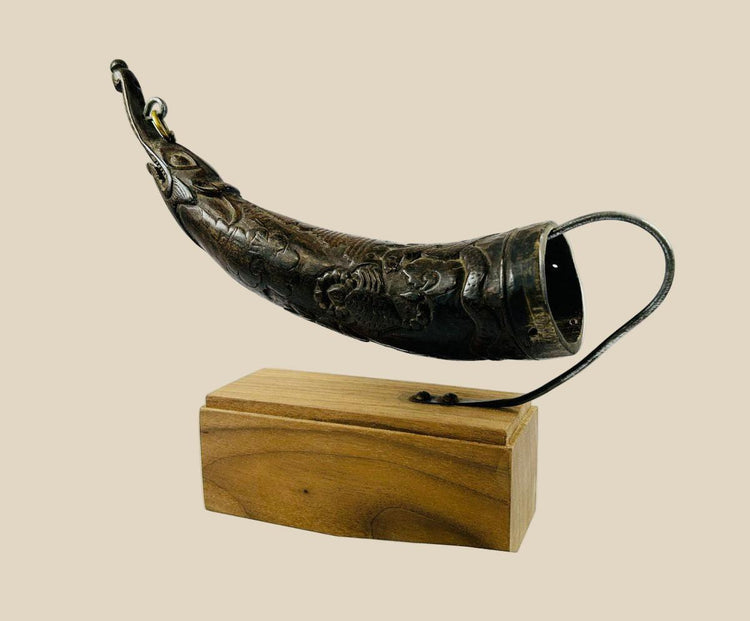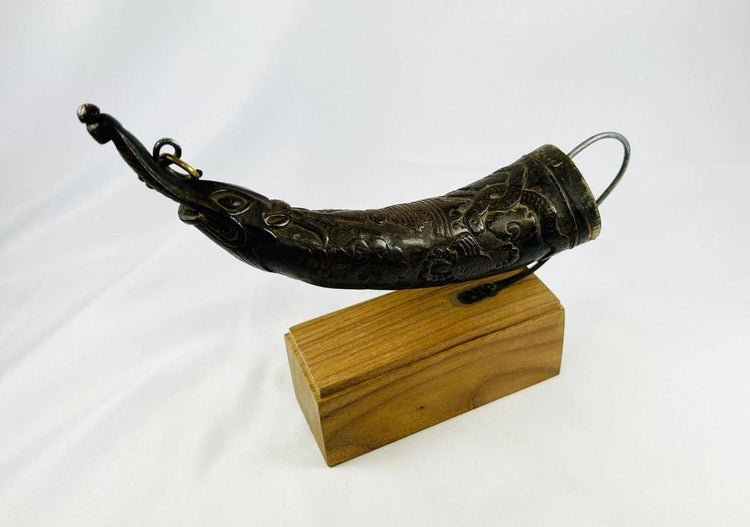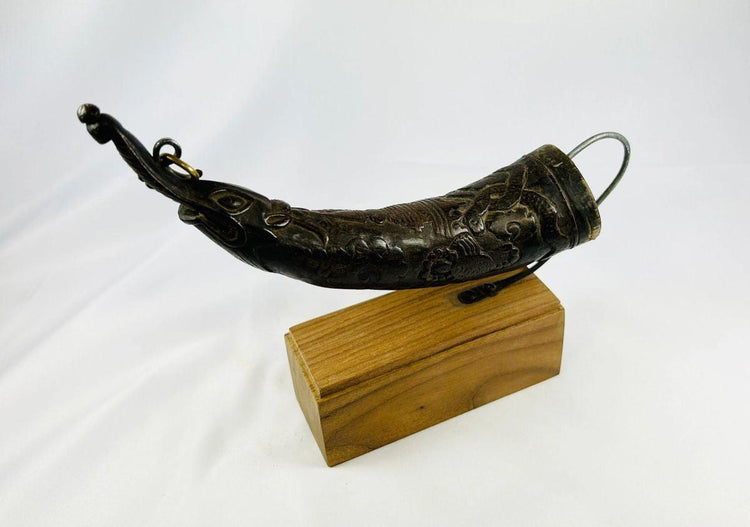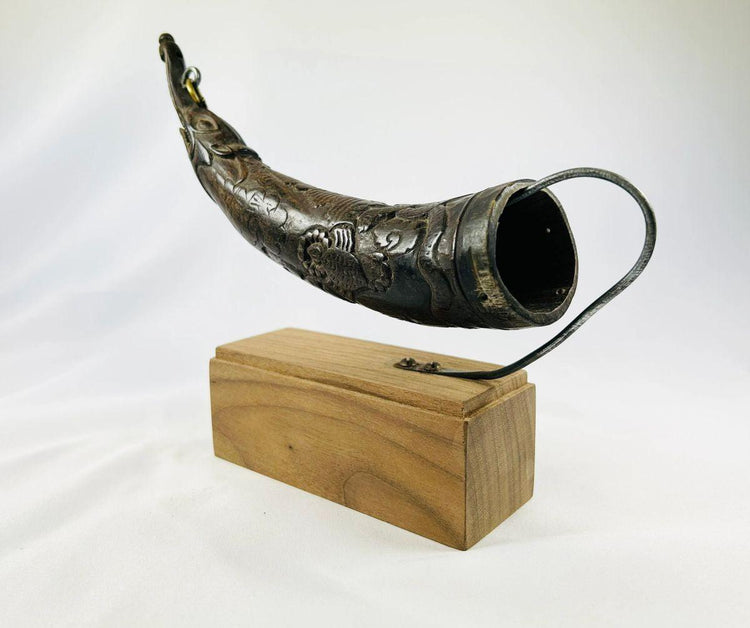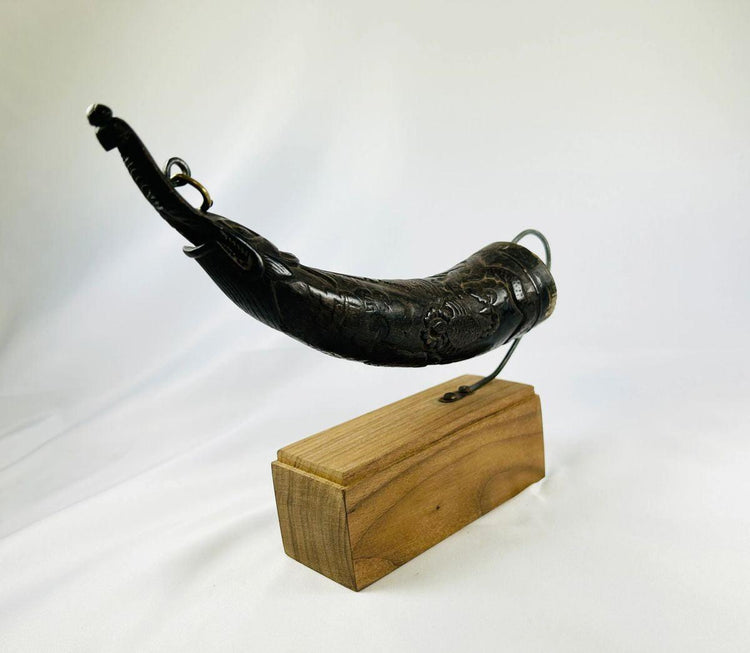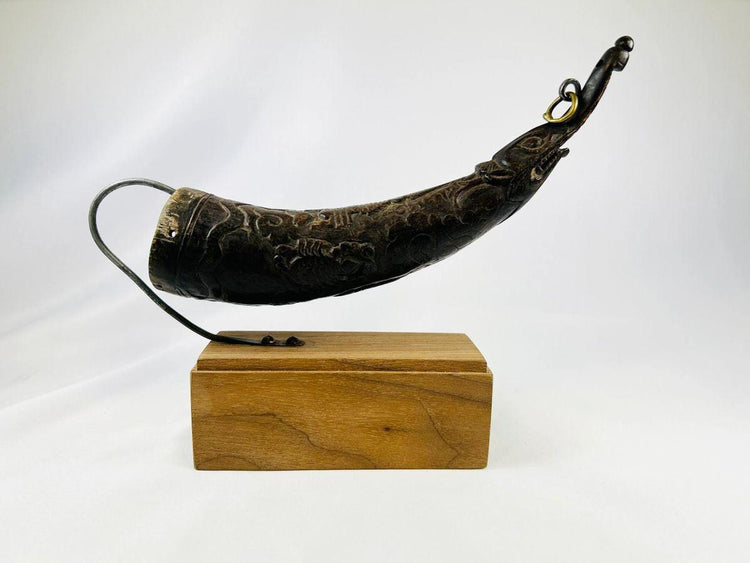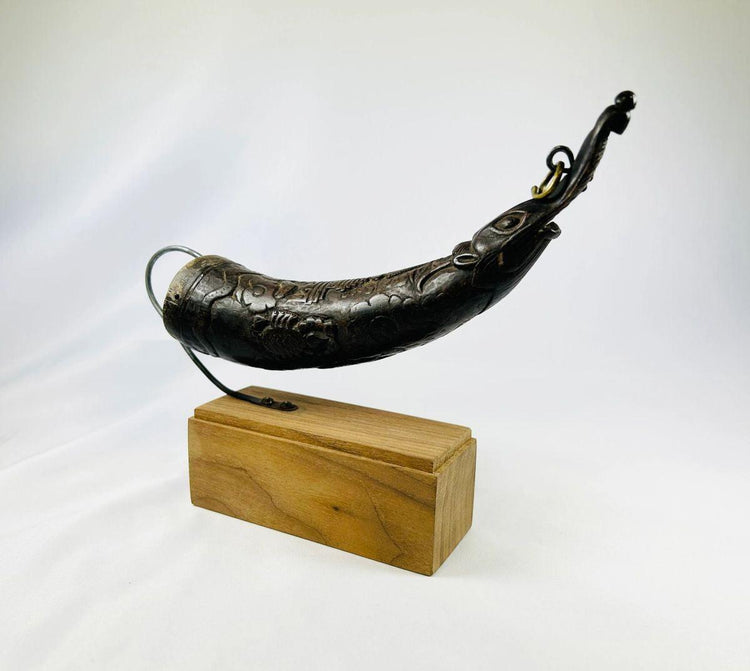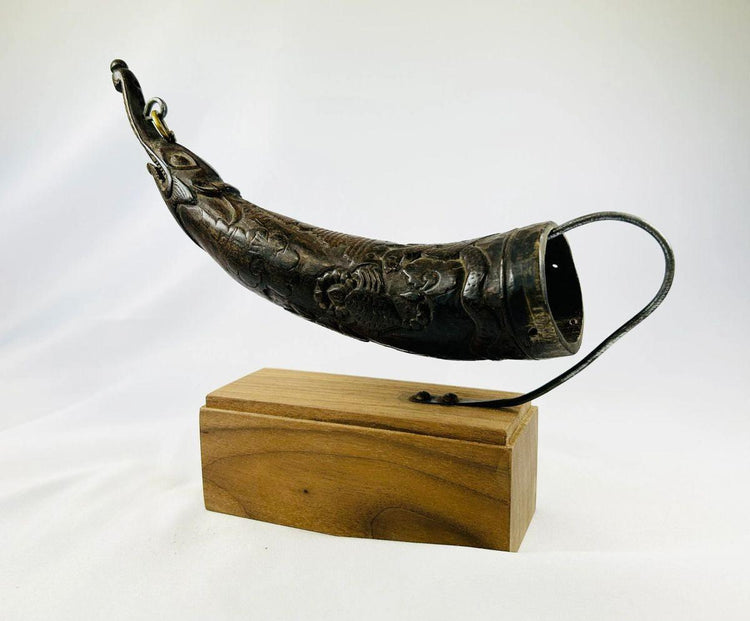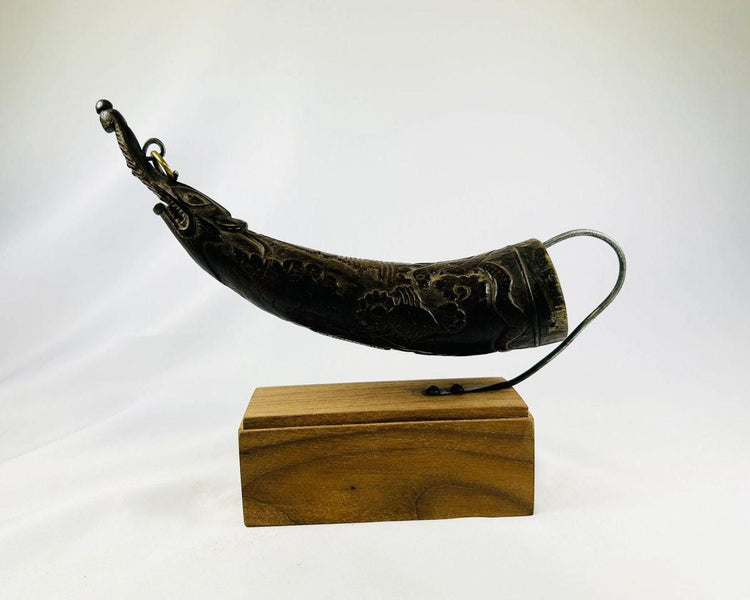Tibetan Buddhist Ritual Implement | Carved Horn Seed Dispenser | 18th–19th Century
Description
More
Less
Historical Context & Origin
Region: Tibet, Himalayan region
Material: Carved horn
Period: 18th–19th Century (traditional form)
Description
This rare and intricately carved Tibetan ritual horn was traditionally used in monastic fire-offering ceremonies to dispense mustard seeds, symbolizing purification and the removal of obstacles. Measuring 7.5 inches in length, the horn embodies both the spiritual depth and the artistic refinement of Tibetan Buddhist ritual implements. Its design integrates sacred symbolism with masterful craftsmanship, making it both a devotional object and an artful artifact.
Features
- Carved horn ritual implement, 7.5 inches long
- Aperture for dispensing mustard seeds during fire ceremonies
- Tip carved into a makara (mythical dragon-like creature)
- Elongated snout aperture for controlled release of seeds
- Additional decorative motifs and carved figures along the body
Cultural Significance
In Tibetan Buddhism, mustard seeds play a central role in purification rituals, believed to destroy spiritual impurities and obstacles. During fire-offering ceremonies, practitioners chanted mantras while dispensing the seeds into triangular braziers, symbolically burning away negativity. The makara, a protective hybrid creature from Indian and Himalayan mythology, was often incorporated into ritual objects as a guardian figure. This horn represents both the esoteric symbolism of Buddhist practice and the artistry of Tibetan religious life.
Condition
Well-preserved with intricate carved details intact. Natural surface patina consistent with age enhances its authenticity and spiritual character.
Dimensions (approximate)
Length: 7.5 in
Age
18th–19th Century (traditional form)
Learn More
Discover Similar Artifacts in the Penn Museum Collection
Browse Our Full Collection of Tibetan Relics & Ritual Pieces
Description
Historical Context & Origin
Region: Tibet, Himalayan region
Material: Carved horn
Period: 18th–19th Century (traditional form)
Description
This rare and intricately carved Tibetan ritual horn was traditionally used in monastic fire-offering ceremonies to dispense mustard seeds, symbolizing purification and the removal of obstacles. Measuring 7.5 inches in length, the horn embodies both the spiritual depth and the artistic refinement of Tibetan Buddhist ritual implements. Its design integrates sacred symbolism with masterful craftsmanship, making it both a devotional object and an artful artifact.
Features
- Carved horn ritual implement, 7.5 inches long
- Aperture for dispensing mustard seeds during fire ceremonies
- Tip carved into a makara (mythical dragon-like creature)
- Elongated snout aperture for controlled release of seeds
- Additional decorative motifs and carved figures along the body
Cultural Significance
In Tibetan Buddhism, mustard seeds play a central role in purification rituals, believed to destroy spiritual impurities and obstacles. During fire-offering ceremonies, practitioners chanted mantras while dispensing the seeds into triangular braziers, symbolically burning away negativity. The makara, a protective hybrid creature from Indian and Himalayan mythology, was often incorporated into ritual objects as a guardian figure. This horn represents both the esoteric symbolism of Buddhist practice and the artistry of Tibetan religious life.
Condition
Well-preserved with intricate carved details intact. Natural surface patina consistent with age enhances its authenticity and spiritual character.
Dimensions (approximate)
Length: 7.5 in
Age
18th–19th Century (traditional form)
Learn More
Discover Similar Artifacts in the Penn Museum Collection
Browse Our Full Collection of Tibetan Relics & Ritual Pieces
You May Also Like


























